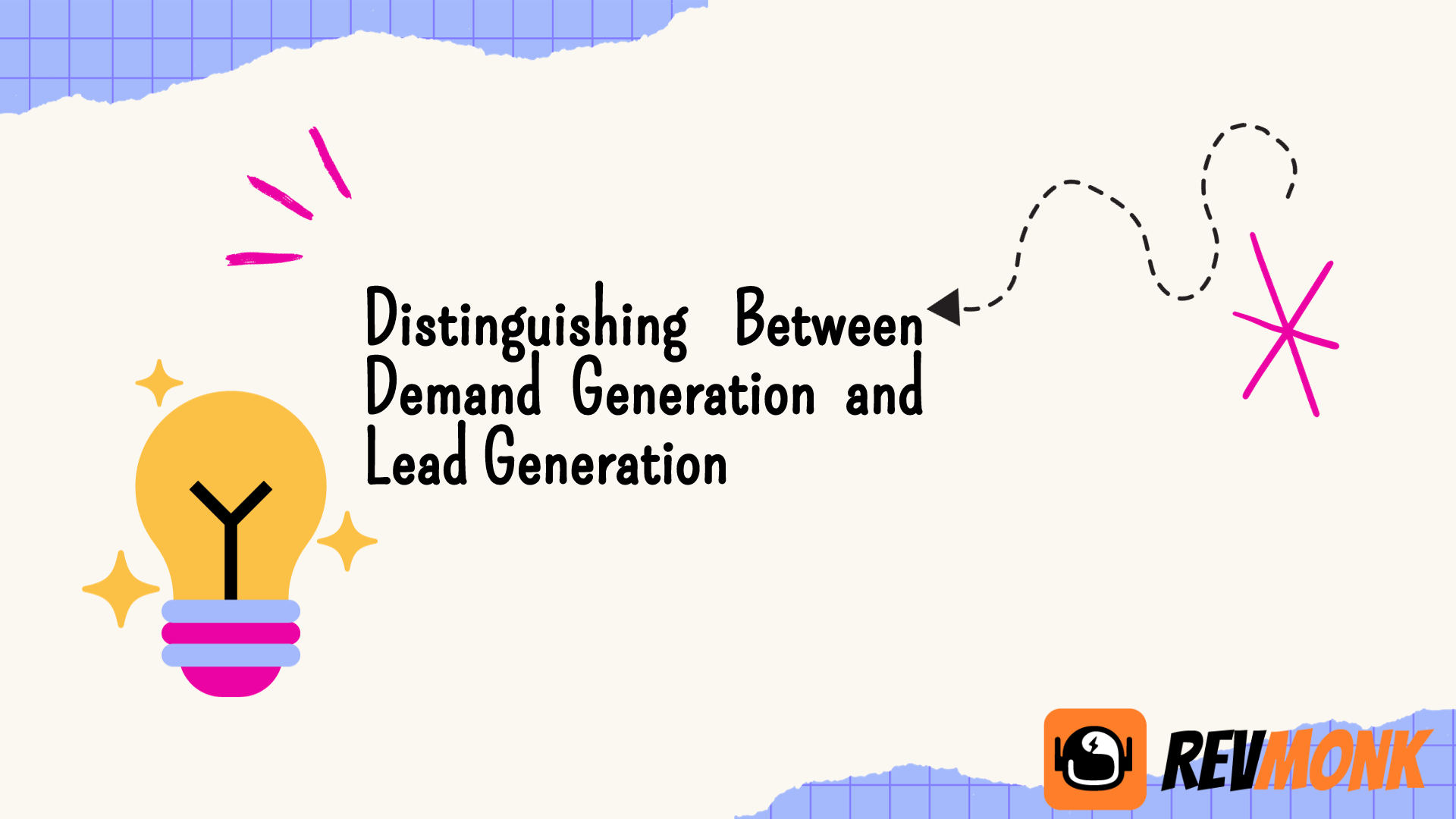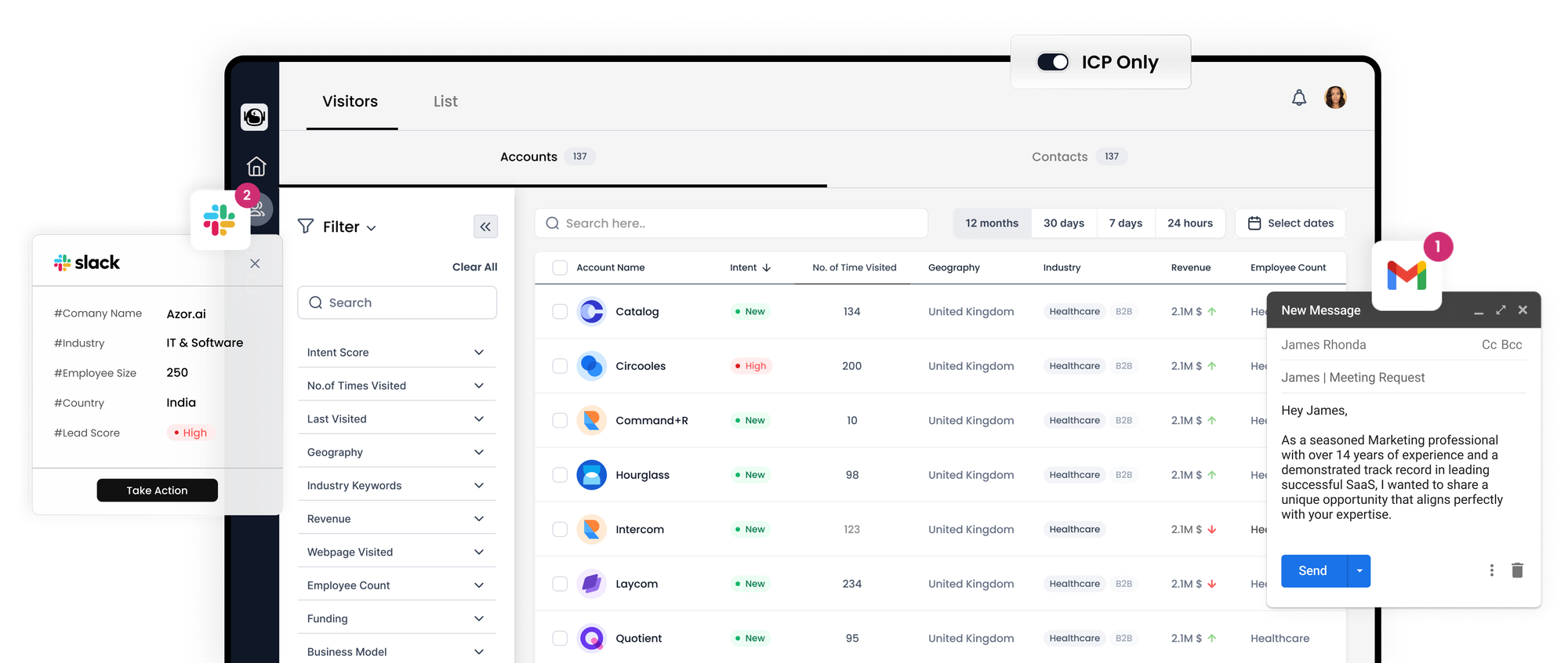Distinguishing Between Demand Generation and Lead Generation

Many marketers and salespeople often use the terms "demand generation" and "lead generation" interchangeably, but it's important to recognize that they are distinct concepts. Lead generation is, in fact, a subset of demand generation. In this article, we will delve into the differences between these two strategies, how they can complement each other, and the considerations for prioritizing them in your marketing approach.

Demand Generation vs. Lead Generation
1. Demand Generation
Demand generation is a comprehensive B2B marketing strategy that aims to create awareness and draw attention to your brand or product across various channels. It encompasses activities like content marketing, event marketing, and social media marketing, covering the entire spectrum from the top of the sales funnel to customer engagement. Demand generation comprises five key phases: Demand Creation, Demand Capture, Revival, Acceleration, and Expansion. Each phase builds upon the previous one, ultimately aiming to engage potential buyers and convert them into satisfied customers.
The specific methods employed in demand generation can vary widely depending on your target audience. It may involve creating informative blog content, showcasing thought leadership from experts, or investing in paid advertising on platforms like Facebook and LinkedIn. There is no universally "right" approach, as effectiveness often requires experimentation tailored to your business.
2. Lead Generation
Lead generation is a component of demand generation that capitalizes on the awareness generated through successful demand generation efforts. It focuses on transforming individuals in your audience into actionable leads by enticing them to express interest in your offering. These leads are subsequently nurtured and guided through the sales funnel, progressing from being aware of a problem to being aware of your solution and product.
Think of lead generation as the harvest stage in farming, following the sowing and watering of the soil (demand generation). Common lead generation strategies involve offering gated content in exchange for contact information, such as email addresses. This information establishes a direct line of communication with potential leads.
Prioritizing Demand Gen vs. Lead Gen
The decision to prioritize demand generation or lead generation depends on your specific circumstances:
- If you're a startup lacking an established audience and awareness, focus on demand generation to build trust and create valuable content before pitching your product.
- If you have significant interest in your product but face challenges in transitioning marketing-qualified leads (MQLs) into customers, allocate more attention to lead generation. Optimize the alignment between your demand generation and lead generation efforts.
- Avoid siloing your demand generation (e.g., content marketing) and lead generation (e.g., social ads) efforts. These strategies should complement each other rather than be treated as mutually exclusive.
In essence, both demand generation and lead generation serve as fundamental stages in the sales process, from creating awareness to cultivating interest. Striking the right balance between these two aspects is key to an effective marketing strategy, taking into account your audience's needs and preferences.
Synergy between Demand Gen and Lead Gen
It's crucial to recognize that demand generation and lead generation work in tandem rather than being in opposition. Demand generation creates awareness, while lead generation converts that awareness into interest, ultimately yielding qualified leads with a higher likelihood of making a purchase. Here's a practical example:
1. Demand generation involves publishing an SEO-friendly blog post that ranks well on Google, providing valuable information.
2. Lead generation adds a call to action at the end of the blog post, offering a free e-book on the topic with more insights. Readers interested in the e-book submit their email addresses, becoming prospective leads.
3. Lead nurturing occurs through email campaigns that provide further information about your product or service.
4. Lead capturing happens when a lead signs up for a demo or consultation, signaling readiness for the sales process.
5. Completing the sale results in a customer making a purchase.
Implementing Demand Gen and Lead Gen
While understanding the difference between demand generation and lead generation is essential, the real challenge lies in their execution. Marketing is seldom straightforward, and there's no one-size-fits-all approach. Successful integration of these strategies requires experimentation and adaptability. Assess how your demand generation efforts can seamlessly feed into your lead generation, and vice versa. Tailor your content and offers to your audience, your product, and the initial results you observe.
In conclusion, demand generation and lead generation are pivotal components of a comprehensive marketing strategy, working hand in hand to transform leads into paying customers. Embrace the dynamic nature of marketing, and through experimentation, find the best way to leverage these strategies for your business's success.
